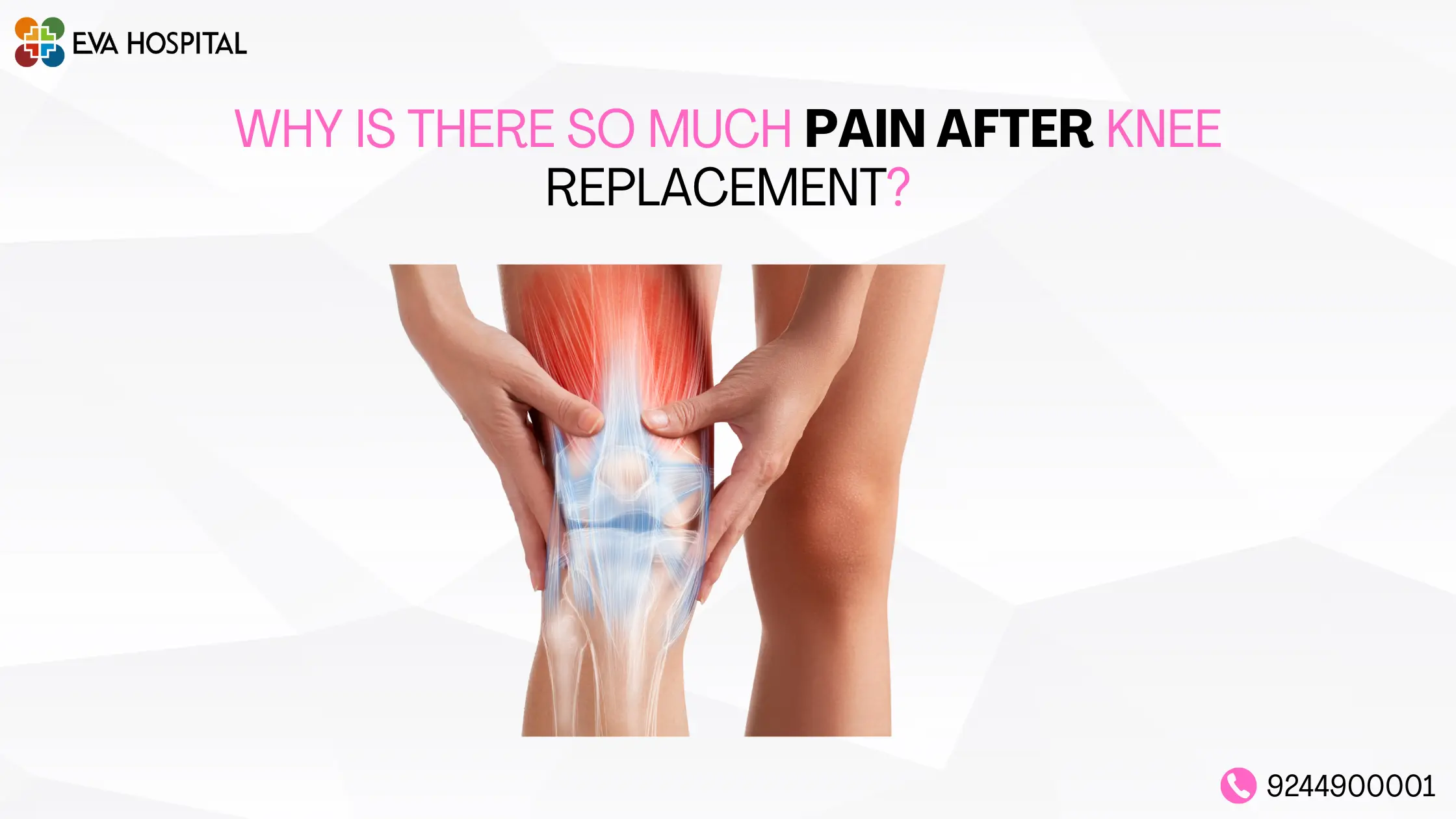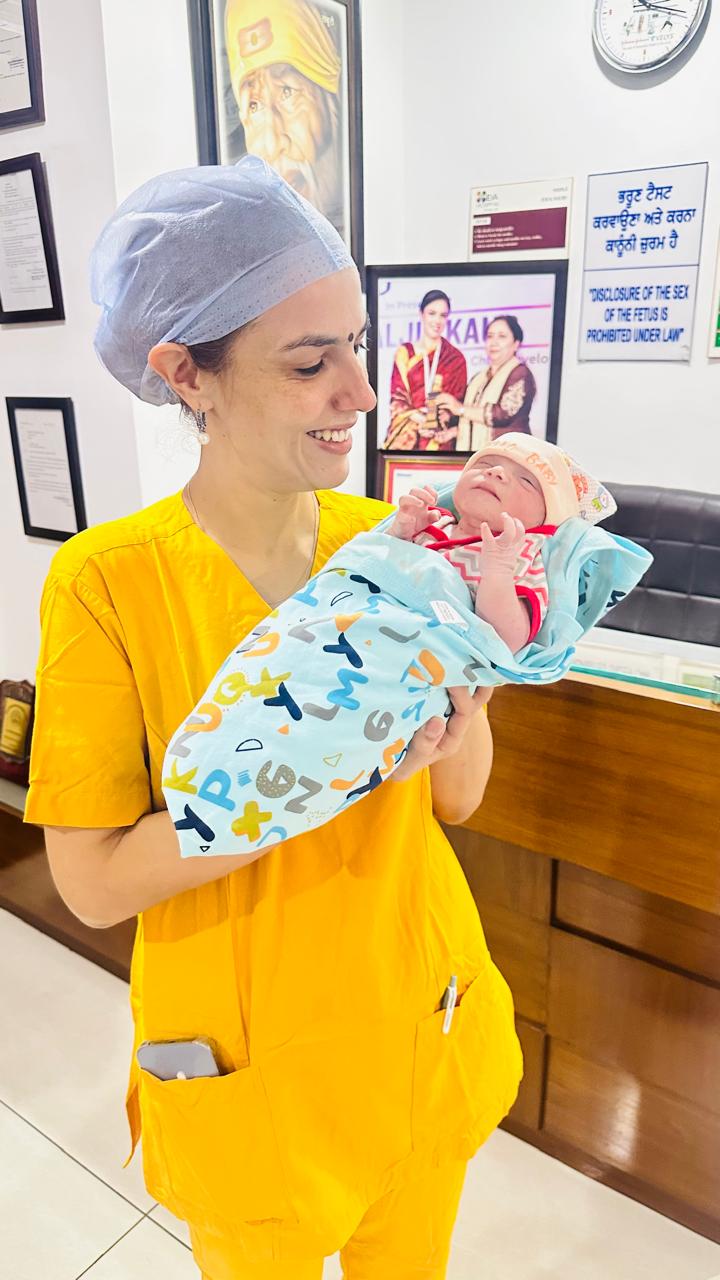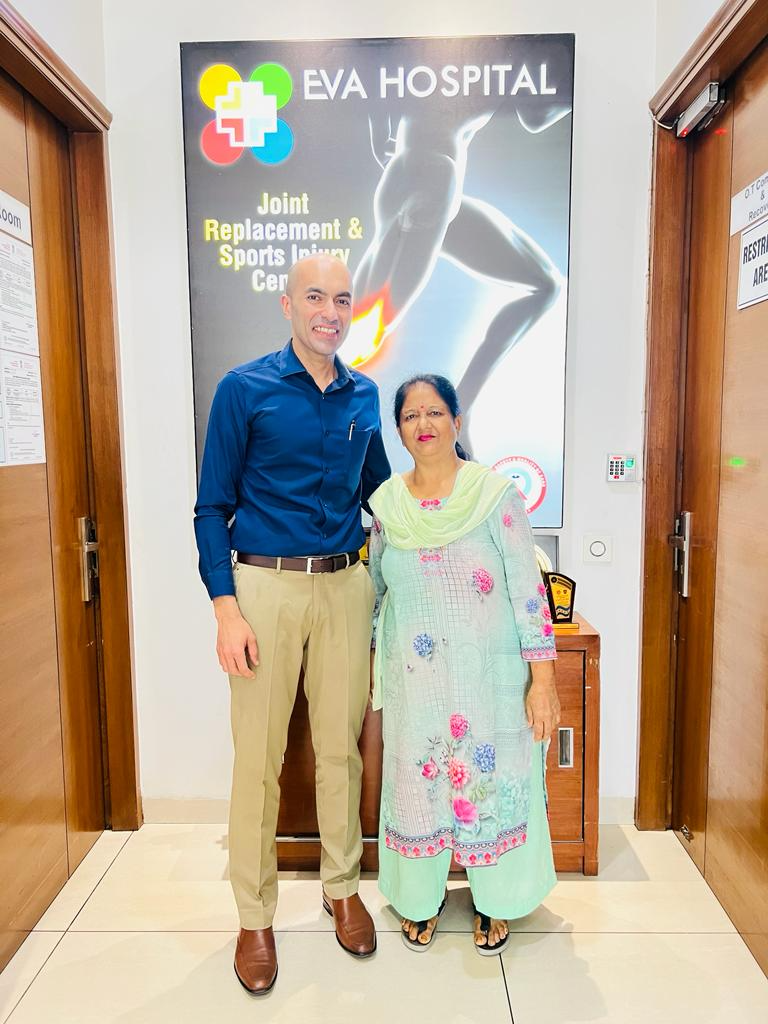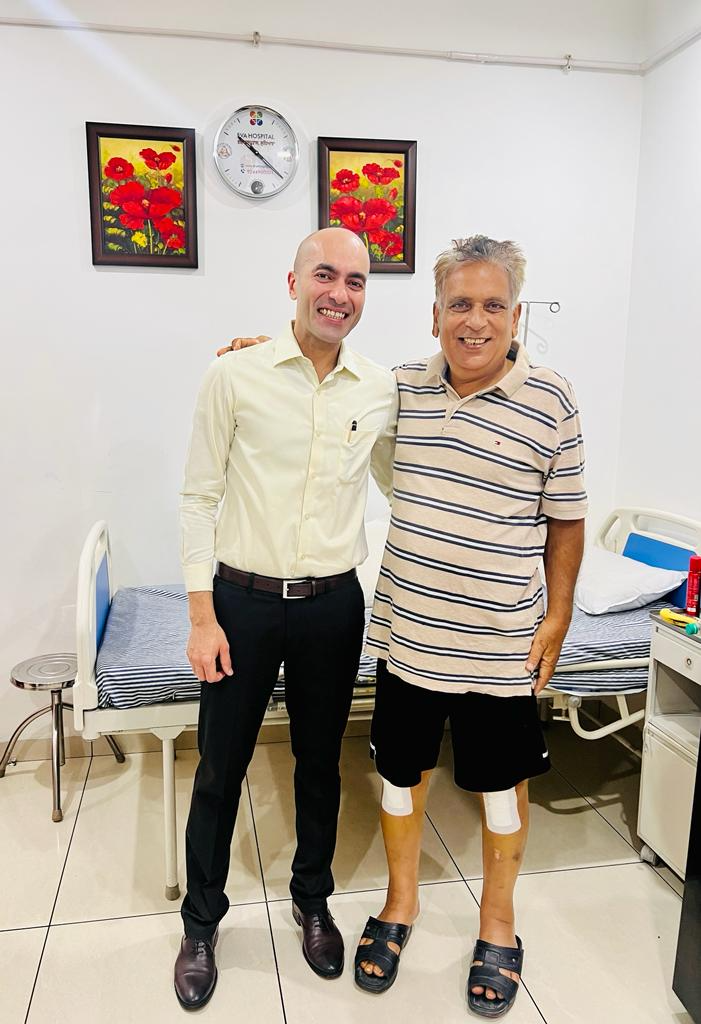Summary
Being an orthopaedic surgeon, I usually advise patients who are concerned about the amount of discomfort that he/she experiences after undergoing knee replacement surgery. Healing is quite tangible, and despite the fact that knee replacement is effective in the long term, the first few weeks are likely to be characterized by swelling, stiffness, nerve sensitivity, and soreness. In this article, I will explain in detail Why is there so much pain after knee replacement?, how the body heals, which pains are normal, and which symptoms need medical attention. At the end of it, you will know clearly what recovery is according to my experience at Eva Hospital.
Introduction
I’m Dr. Tanveer Bhutani bone specialist in Ludhiana at Eva Hospital, and over the years I have performed thousands of knee operation replacement procedures. I Know I am writing blog after so many days, I was bit occupied with knee replacement surgieries, I remebber last blog i wrote was about ACL Injury treatment. Among the most frequent complaints I receive when attending to the patients is the issue of pain during early healing process. It is assumed that when a joint that is affected is substituted, the pain would be gone in a flash. However, in the real sense, knee replacement is a significant operation that affects the skin, muscle, bone, ligaments as well as the nerves, all of which require time to recover.
Although the surgery eventually gets rid of the symptoms of arthritis, the initial period of recovery is usually associated with swelling, inflammation, temporary nerve irritability, and muscle weakness. Together, these factors may make patients wonder: Why is there so much pain after knee replacement?
I will expound on this to make you aware of what is normal, what is anticipated and how you can cope with the recovery process without risks.
Why is there so much pain after knee replacement?
This is one of the most common questions that patients present to me as the expectation is that pain should instantly leave as soon as the damaged joint is replaced. But knee replacement is a process that requires time to recover by resurfacing, balancing the ligaments, and manipulation of soft tissues. The pain usually consists of surgical trauma, swelling within the joint, inflammation and natural healing process in the body. Although this may be a very overwhelming event at the start, it is a sign that your body is still healing itself.
Surgical Trauma and Tissue Healing
In the process, the surgeon uses a slice of skin, muscles, and connective tissue. Bones are marked and carved in such a manner that the implant would fit in. These measures, as needed, cause tissue injury on microscopic levels. Inflammation is the body response which triggers healing cells to the region but results in swelling, warmth and pain. This is a normal process of tissue repair and stabilizing the new joint in the body and is considered as pain that is experienced in the early stages.
Bone Remodeling and Nerve Irritation
The other cause of great discomfort is that the extremities of the bones are restructured and this may cause discomfort to the pain sensitive organs. Also, there are small nerves around the incision that may be distended or paralyzed. When these nerves regenerate, patients can experience tingling, burning, or shooting pains. Such symptoms may be disturbing, but they normally get better as nerves regenerate and adjust.
Medically Recommended Approach to Managing Knee Replacement Pain
The most effective solution doctors recommend for managing pain after knee replacement is a combination of targeted pain-control medication, structured physiotherapy, and proper swelling management. Anti-inflammatory medication, ice, and elevation regimens are usually provided to patients to minimize swelling, the primary cause of initially painful states. Meanwhile, the physiotherapy program can be assisted by a supervisor to reestablish movement, tighten the surrounding muscles, and avoid stiffness that may increase pain.
Physicians also recommend the use of walking aids at the beginning, bending and straightening exercises which are gentle and should not be over exerted. Drugs such as pregabalin can be temporarily included in the treatment in the event of pain-related with the nerves. As a whole, medication, movement, controlled activity, frequent follow-ups are the best combination with which one can feel better and recover easily.
Types of Pain After Knee Replacement Surgery
Discomfort that patients might experience has several types, and each of them is based on the various tissues, and different stages of healing. Knowledge on these patterns aids in differentiating normal healing and abnormal symptoms. The others complain of pains around the incision, stiffness in movement or sharp pinching pains during certain activities. These pains are affected by swellings, tightness of the muscle and the level of activity of the knee being utilized in the rehabilitation process.
Sharp Pain on Inside of Knee After Knee Replacement
The pain can also be in the inner knee area where the region is stretched and has ligaments and soft tissues which also are distended during surgery. These structures might be not only temporary sensitive with the swelling variability and movement. This form of acute pain is normally related to activities and is relieved through ice treatment, moderate exercise, and progressive strengthening.
What Causes Pain Behind Knee After Total Knee Replacement
The tension in the hamstring tendons or the swelling accumulated behind the joint usually causes pain behind the knee. This region is referred to as the popliteal region which is sensitive to fluid accumulation. Though this pain normally subsides with an increase in elevation, stretching, and physiotherapy, extreme or enduring posterior pain must be assessed to eliminate the uncommon complications of a cyst or deep vein thrombosis.
How Long Does Pain Last After TKR?
A common question patients ask me is, “Doctor, how long does pain last after TKR?
The process of healing is different, although the majority of individuals report gradual progress rather than at 6 to 12 weeks. The initial 10 days are normally the most intense and then there is a slow decrease of stiffness and discomfort. The time spent on full comfort can be several months when muscles get stronger and the body becomes accustomed to the new joint mechanics.
The First Six Weeks — The Most Sensitive Phase
At this stage, the swelling is at its maximum level since the tissues are still inflamed and adapting to the implant. Some activities of everyday life such as walking, using stairs, or bending the knee can result in mild to moderate pain. Physiotherapy is also very important at this stage as it helps to avoid stiffness and accelerate the healing process, even though it can temporarily make the discomfort worse since the muscles are just starting to work.
Six to Twelve Weeks — Building Strength and Mobility
Inflammation decreases to great extent and walking becomes smooth by this time. Pain is more likely to change to mild pains particularly following prolonged activity, rather than sharp or burning sensations. This is the strengthening phase, which is the phase during which the knee starts to stabilize. Continuous intense pain at this stage can show over doing or bad technique in exercises which can be rectified in guided physiotherapy.
Understanding Nerve Pain After Knee Replacement
The fact that patients feel burning or electric-like sensations following surgery worries many of them. These are often associated with nerve recovery, and not with a complication. During regeneration, the nerves can be irregular and transmit bizarre signals to the brain. This may be an uncomfortable process but it is taken to be a normal process of recovery.
What Helps Nerve Pain After Knee Replacement
Nerve sensitivity can be alleviated by medications like pregabalin or gabapentin. Nerve irritation can be also minimized with the help of ice therapy, gentle nerve-gliding exercises, and avoiding long-term pressure on the incision area. The nerve pain will in the vast majority of cases reduce gradually during the course of several weeks, and the restoration of nerve functions can take months.
Why Nerve Sensitivity Occurs During Recovery
The nerve branches are either pulled or cut in the course of surgery when the initial incision is made. The regeneration rate of these nerves is slow and when they regenerate, tingling, burning or sudden zaps of pain may occur. This is the healing process although worrying to patients and normally gets better over time.
Secondary Pain — Ankle, Calf, and Lower Leg Discomfort
The knee is not the only part that patients feel pain after surgery; the ankle or the calf are also pained. This is due to the fact that the biomechanics of the leg would change after the joint is corrected. With increase in alignment, there is a change in weight distribution and the neighboring joints and muscles readjust.
Ankle Pain After Knee Replacement
This pain mostly happens when the leg has started to support weight in a different manner. The muscles and tendons in the ankle have to adjust to the new alignment and this would result in temporary soreness. Light stretching, good shoes, and gradual walking alleviate this pain.
Calf Pain After Knee Replacement
The soreness of the calf is normally caused by the increase of walking or tightness of the muscles. Nevertheless, acute or excessive calf pain has to be evaluated as fast as possible to exclude blood clots. The majority of calf discomfort can be treated by means of mobility drills, hydration, and physiotherapy.
When Pain Indicates a Complication of Knee Surgery
While most discomfort is part of normal healing, certain symptoms can indicate a complication of knee surgery. Any persistent or deteriorating pain following the period of the first recovery cannot be overlooked. These are the complications that are not frequent, but with the help of diagnosing them in time, the treatment will be successful and the long-term problems can be avoided.
Infection and Inflammation
Infection may be indicated by signs like fever, redness, excessive warmth, foul-smell discharge, or a growing level of pain. Such severe complications could be avoided by early medication or minor interventions.
Implant Loosening or Misalignment
When pain levels do not decrease or walking gets more and more difficult months after the surgery, it can be indicative of mechanical imbalance or concerns with the implants. These problems must be evaluated through clinical assessment and imaging to ascertain the reason.
Managing Pain After Replacement Surgery
Pain should be managed effectively to enable effective recovery. Patients often ask how to reduce pain after replacement surgery so they can move comfortably and participate in physiotherapy. The combination of drugs, lifestyle modifications, and supervised exercises tend to be excellent outcomes.
Medication, Ice, and Swelling Control
Painkillers may be prescribed, and anti-inflammatory drugs, as well as icing the knee several times a day, will help a lot in decreasing swelling. Raising the leg when resting is also effective in facilitating the movement of the fluid out of the knee, which reduces pain.
Physiotherapy and Gentle Mobilization
One of the most effective tools of pain reduction is exercise. The quadriceps can be strengthened, and flexibility enhanced and the walking distance gradually increased to make the joint more stable. When physiotherapy is done properly, stiffness is avoided and full recovery is also accelerated.
Conclusion
Understanding Why is there so much pain after knee replacement? can reduce anxiety and help you stay committed to your recovery plan. Short-term discomfort is normal, and through supervised care, the majority of the patients experience high mobility and proceed to have painless and active living. Whenever you have some symptoms that appear to be abnormal or violent, it is always advisable to present them to your surgeon to have them checked.
FAQs
Yes. Pain after knee replacement is expected due to inflammation and tissue healing. It tends to improve every week.
Sharp pain on inside of knee after knee replacement often occurs due to healing of ligaments and inner soft tissues.
What causes pain behind knee after total knee replacement is usually swelling or tightness in the tendons behind the joint.
The majority of patients experience significant improvement within 6-12 weeks but can be completely comfortable only in several months.
In case of fever, redness, calf pain, which are severe and calf pain, or pain aggravates rather than resolves, contact your surgeon.



















